AI–Social Media Integration for Crisis Management: A Systematic Review of Data and Learning Aspects
Abstract
1. Introduction
1.1. Related Work and Motivation
1.2. Research Gap and Contributions
- RQ1: What are the recently proposed solutions for crisis management using AI and social media platforms?
- RQ2: What are the common essential aspects of the crisis management solutions proposed through the integration of social media and AI techniques?
- RQ3: What taxonomy can effectively summarize the essential aspects of the proposed solutions in the field of crisis management?
- RQ4: What are the key findings derived from the reviewed studies?
- RQ5: What are the main challenges in current solutions related to the integration of social media data and AI techniques for crisis management?
- A comprehensive analysis of recent crisis management solutions that integrate AI techniques with social media platforms.
- A comparative synthesis of existing approaches, highlighting the common essential aspects across studies and providing a unified understanding of the field.
- The development of a structured taxonomy of these aspects, forming the basis for a novel analytical framework for AI-driven crisis management research.
- The synthesis of key findings from reviewed studies, identifying emergent trends and evidence-based practices in the field.
- The identification of critical challenges in current solutions, establishing a foundation for future research directions in crisis management using AI and social media.
- Actionable insights and evidence-based recommendations to support researchers and practitioners in developing more effective and innovative crisis management solutions.
- Data Aspect: encompasses key factors such as data types, data labeling methods, and data sources, which together define how information is collected, represented, and annotated across diverse crisis scenarios.
- Learning Aspect: includes learning models, learning domains, learning phases, learning types, and learning objectives, which determine how AI methods interpret, generalize, and adapt to diverse crisis contexts.
1.3. Paper Organization
2. Research Methodology
2.1. Source Material and Search Strategy
- Springer: 15,784 records;
- ScienceDirect: 38,581 records;
- Taylor and Francis: 9073 records;
- IEEE Xplore: 937 records.
2.2. Study Selection Based on Eligibility Criteria
- Inclusion Criteria:
- -
- Journal articles in English;
- -
- Published between 2020 and 2024;
- -
- Focused on computer science and technology;
- -
- Utilized AI techniques in crisis management contexts.
- Exclusion Criteria:
- -
- Non-article document types (e.g., books, book chapters, conference proceedings, reference works);
- -
- Publications before 2020;
- -
- Studies from fields outside computer science (e.g., engineering, business, medicine, public health) not employing AI techniques.
- Duplicate Removal: 217 duplicated records were identified and removed, ensuring each study was represented only once in our dataset.
- Quality Assessment: We evaluated the credibility and reliability of the remaining studies based on their journal’s quartile ranking in the Web of Science.In addition, the methodological quality and potential risk of bias of each included study were independently assessed by the review team to ensure transparency and rigor. The quality assessment followed two levels: (1) evaluating the credibility of journals based on their Web of Science quartile ranking and (2) assessing the methodological rigor and potential risk of bias of each study based on the consistency, completeness, and clarity of methodological reporting.
- Priority was given to articles published in journals with an ISI Impact Factor in the Q1–Q2 range, recognizing their high standards and rigorous peer review processes.
- Articles not indexed in the Web of Science or positioned in the third or fourth quartile rankings were excluded.
- 1700 records were excluded due to not meeting the quality criteria.
- 192 articles remained for further examination.
2.3. Titles and Abstracts Screening
- Articles exploring the use of social media in crisis management that do not incorporate AI techniques.
- Studies employing AI in crisis management that operate independently of social media data streams.
- 52 articles were excluded due to their failure to satisfy the eligibility criteria.
- 140 studies were retained for further analysis.
2.4. Data Extraction
- Empirical studies;
- Comparative studies;
- Behavioral models;
- Theoretical models;
- Improvements on theoretical models;
- Frameworks, tools, models, and systems;
- General application and usage;
- Review papers;
- Other.
2.5. Synthesis of Results
3. Data Aspect
3.1. Data Type
3.1.1. Unimodal Data
3.1.2. Multimodal Data
3.2. Data Labeling Methods
3.2.1. Manual Labeling
3.2.2. Automatic Labeling
3.2.3. Hybrid Approach
3.3. Data Source
3.3.1. Single-Sources
3.3.2. Multi-Sources
3.4. Analysis and Discussion of Data Aspect
4. Learning Aspect
- Learning models: Traditional machine learning and deep learning;
- Learning domains: in-domain and cross-domain;
- Learning phases: pre-disaster, during-disaster, and post-disaster
- Learning types: batch and real time;
- Learning objectives: event detection, damage assessment, sentiment analysis, etc.
4.1. Learning Model
4.1.1. Traditional Machine Learning Algorithms
4.1.2. Deep Learning Algorithm
4.1.3. Hybrid Algorithms
4.2. Learning Domain
4.2.1. In-Domain Approach
4.2.2. Cross-Domain Approach
4.2.3. Hybrid Approach
4.3. Learning Phase
4.3.1. Pre-Disaster Phase
4.3.2. During-Disaster Phase
4.3.3. Post-Disaster Phase
4.4. Learning Type
4.4.1. Batch Learning
4.4.2. Real-Time Learning
4.4.3. Hybrid Approach
4.5. Learning Objective
4.5.1. Identifying Informative Data
4.5.2. Sentiment Analysis
4.5.3. Event Detection
4.5.4. Event Summarization
4.5.5. Damage Assessment
4.5.6. Identifying Humanitarian Information
4.5.7. Disaster Classification
4.5.8. Other Objectives
4.6. Analysis and Discussion of Learning Aspect
4.6.1. Distribution Analysis of Learning Models
4.6.2. Learning Phase and Type Analysis
4.6.3. Learning Objectives Analysis
4.6.4. Learning Domain Performance Comparison
5. Discussion, Limitations, and Future Directions
5.1. Integrated Analysis of Crisis Management Approaches
5.1.1. Comparative Analysis of Design Criteria
- Data Type: Unimodal approaches (67%) dominate, but multimodal solutions (33%) show an increasing trend in recent years.
- Learning Domain: In-domain approaches (87%) are substantially more common than cross-domain approaches (23%), highlighting a limitation in generalizability.
- Learning Model: Deep learning techniques (83%) are preferred over traditional machine learning methods (47%) with some studies employing both approaches.
- Data Labeling: While all studies utilize manual labeling to some degree, only 47% incorporate automatic labeling techniques.
- Learning Type: Batch learning (93%) is overwhelmingly favored over real-time approaches (33%) with few studies implementing truly real-time solutions.
- Data Source: Single-source implementations (83%) predominate with multi-source approaches (17%) remaining underutilized despite their potential benefits.
5.1.2. Predominant Approaches and Their Effectiveness
5.1.3. Temporal Evolution of Approaches
5.2. Critical Analysis of Current Approaches
5.2.1. Data Aspect Limitations
5.2.2. Learning Aspect Limitations
5.2.3. Limitations of the Review Process
5.3. Emerging Trends and Future Directions
5.3.1. Enhanced Data Strategies
5.3.2. Advanced Learning Approaches
5.3.3. Integration with Decision Support Systems
5.3.4. Ethical and Privacy Considerations
6. Conclusions
Author Contributions
Funding
Institutional Review Board Statement
Informed Consent Statement
Data Availability Statement
Conflicts of Interest
Abbreviations
| AI | Artificial Intelligence |
| AlexNet | AlexNet Convolutional Neural Network |
| ANN | Artificial Neural Network |
| BERT | Bidirectional Encoder Representations |
| Bi-LSTM | Bidirectional Long Short-Term Memory |
| BMLP | Bidirectional Multilayer Perceptron |
| CAMM | Cross-Attention Multimodal |
| CBOW | Continuous Bag-of-Words |
| CCE | City Council Evolution |
| CD-NAS | Crowd–AI Dynamic Neural Architecture Search |
| CLIP | Contrastive Language–Image Pretraining |
| CNN | Convolutional Neural Network |
| CV | Computer Vision |
| Deep-CNN | Deep Convolutional Neural Network |
| DANN | Domain Adversarial Neural Network |
| DBSCAN | Density-Based Spatial Clustering |
| DL | Deep Learning |
| ECR-BERT | Emotion–Cognitive Reasoning Integrated BERT |
| ESVM-ELM | Ensemble SVM-Based Extreme Learning Machine |
| GAT | Graph Attention Network |
| HHNN | Hyperbolic Hopfield Neural Network |
| ICLR | In-domain and Cross-domain Laplacian Regularization |
| InceptionV3 | Inception Version 3 Convolutional Neural Network |
| JoSE | Joint Spherical Embedding |
| LDA | Latent Dirichlet Allocation |
| LSTM | Long Short-Term Memory |
| ML | Machine Learning |
| MOEA | Multi-Objective Optimization-Based Evolutionary Algorithm |
| NB | Naïve Bayes |
| NeuroNER | Neural Named Entity Recognition |
| NER | Named Entity Recognition |
| NLP | Natural Language Processing |
| PRISMA | Preferred Reporting Items for Systematic Reviews and Meta-Analyses |
| R-CNN | Rumor-Convolutional Neural Network |
| RCNN | Recurrent Convolutional Neural Network |
| RF | Random Forest |
| ResNet | Residual Neural Network |
| ResNet-50 | Residual Neural Network (50 Layers) |
| SDAE | Sparse Denoising Autoencoder |
| SLR | Simple Linear Regression |
| SMM | Support Measure Machine |
| SVR | Support Vector Regression |
| Text-CNN | Text-Convolutional Neural Network |
| TF-IDF | Term Frequency–Inverse Document Frequency |
| VGG-16 | Visual Geometry Group Network (16 Layers) |
| Word2Vec | Word-to-Vector Embedding Model |
References
- Ogie, R.; James, S.; Moore, A.; Dilworth, T.; Amirghasemi, M.; Whittaker, J. Social media use in disaster recovery: A systematic literature review. Int. J. Disaster Risk Reduct. 2022, 70, 102783. [Google Scholar] [CrossRef]
- Saroj, A.; Pal, S. Use of social media in crisis management: A survey. Int. J. Disaster Risk Reduct. 2020, 48, 101584. [Google Scholar] [CrossRef]
- Kumar, A.; Singh, J.; Dwivedi, Y.; Rana, N. A deep multi-modal neural network for informative Twitter content classification during emergencies. Ann. Oper. Res. 2020, 319, 791–822. [Google Scholar] [CrossRef]
- Imran, M.; Ofli, F.; Caragea, D.; Torralba, A. Using AI and Social Media Multimodal Content for Disaster Response and Management: Opportunities, Challenges, and Future Directions. Inf. Process. Manag. 2020, 57, 102261. [Google Scholar] [CrossRef]
- Villegas, C.; Martinez, M.; Krause, M. Lessons from Harvey: Crisis Informatics for Urban Resilience. 2018. Available online: https://kinder.rice.edu/research/lessons-harvey-crisis-informatics-urban-resilience (accessed on 25 January 2025).
- Ghafarian, S.H.; Yazdi, H.S. Identifying crisis-related informative tweets using learning on distributions. Inf. Process. Manag. 2020, 57, 102145. [Google Scholar] [CrossRef]
- Martínez-Rojas, M.; del Carmen Pardo-Ferreira, M.; Rubio-Romero, J.C. Twitter as a tool for the management and analysis of emergency situations: A systematic literature review. Int. J. Inf. Manag. 2018, 43, 196–208. [Google Scholar] [CrossRef]
- Alam, F.; Ofli, F.; Imran, M.; Alam, T.; Qazi, U. Deep learning benchmarks and datasets for social media image classification for disaster response. In Proceedings of the 2020 IEEE/ACM International Conference on Advances in Social Networks Analysis and Mining (ASONAM), The Hague, The Netherlands, 7–10 December 2020; IEEE: Piscataway, NJ, USA, 2020; pp. 151–158. [Google Scholar] [CrossRef]
- Dwarakanath, L.; Kamsin, A.; Rasheed, R.A.; Anandhan, A.; Shuib, L. Automated machine learning approaches for emergency response and coordination via social media in the aftermath of a disaster: A review. IEEE Access 2021, 9, 68917–68931. [Google Scholar] [CrossRef]
- Bukar, U.; Sidi, F.; Jabar, M.; Nor, R.N.; Abdullah, S.; Ishak, I.; Alabadla, M.; Alkhalifah, A. How Advanced Technological Approaches Are Reshaping Sustainable Social Media Crisis Management and Communication: A Systematic Review. Sustainability 2022, 14, 5854. [Google Scholar] [CrossRef]
- Bukar, U.A.; Jabar, M.A.; Sidi, F.; Nor, R.N.H.B.; Abdullah, S.; Othman, M. Crisis informatics in the context of social media crisis communication: Theoretical models, taxonomy, and open issues. IEEE Access 2020, 8, 185842–185869. [Google Scholar] [CrossRef]
- Abboodi, B.; Pileggi, S.; Bharathy, G. Social Networks in Crisis Management: A Literature Review to Address the Criticality of the Challenge. Encyclopedia 2023, 3, 1157–1177. [Google Scholar] [CrossRef]
- Page, M.; Mckenzie, J.; Bossuyt, P.; Boutron, I.; Hoffmann, T.; Mulrow, C.; Shamseer, L.; Tetzlaff, J.; Akl, E.; Brennan, S.; et al. The PRISMA 2020 statement: An updated guideline for reporting systematic reviews. J. Clin. Epidemiol. 2021, 134, 178–189. [Google Scholar] [CrossRef]
- Ahmed, Y.A.; Ahmad, M.N.; Ahmad, N.; Zakaria, N.H. Social media for knowledge-sharing: A systematic literature review. Telemat. Inform. 2019, 37, 72–112. [Google Scholar] [CrossRef]
- Nidhra, S.; Yanamadala, M.; Afzal, W.; Torkar, R. Knowledge transfer challenges and mitigation strategies in global software development—A systematic literature review and industrial validation. Int. J. Inf. Manag. 2013, 33, 333–355. [Google Scholar] [CrossRef]
- Xie, S.; Hou, C.; Yu, H.; Zhang, Z.; Luo, X.; Zhu, N. Multi-label disaster text classification via supervised contrastive learning for social media data. Comput. Electr. Eng. 2022, 104, 108401. [Google Scholar] [CrossRef]
- Madichetty, S.M.S. A novel method for identifying the damage assessment tweets during disaster. Future Gener. Comput. Syst. 2021, 116, 440–454. [Google Scholar] [CrossRef]
- Kaufhold, M.A.; Bayer, M.; Reuter, C. Rapid relevance classification of social media posts in disasters and emergencies: A system and evaluation featuring active, incremental and online learning. Inf. Process. Manag. 2020, 57, 102132. [Google Scholar] [CrossRef]
- Avvenuti, M.; Bellomo, S.; Cresci, S.; Nizzoli, L.; Tesconi, M. Towards better social crisis data with HERMES: Hybrid sensing for EmeRgency ManagEment System. Pervasive Mob. Comput. 2020, 67, 101225. [Google Scholar] [CrossRef]
- Dhiman, A.; Toshniwal, D. An approximate model for event detection from twitter data. IEEE Access 2020, 8, 122168–122184. [Google Scholar] [CrossRef]
- Tian, Y.; Fan, R.; Ding, X.; Zhang, X.; Gan, T. Predicting rumor retweeting behavior of social media users in public emergencies. IEEE Access 2020, 8, 87121–87132. [Google Scholar] [CrossRef]
- Fan, C.; Wu, F.; Mostafavi, A. A hybrid machine learning pipeline for automated mapping of events and locations from social media in disasters. IEEE Access 2020, 8, 10478–10490. [Google Scholar] [CrossRef]
- Snyder, L.S.; Lin, Y.S.; Karimzadeh, M.; Goldwasser, D.; Ebert, D.S. Interactive Learning for Identifying Relevant Tweets to Support Real-time Situational Awareness. IEEE Trans. Vis. Comput. Graph. 2020, 26, 558–568. [Google Scholar] [CrossRef]
- Dou, M.; Wang, Y.; Gu, Y.; Dong, S.; Qiao, M.; Deng, Y. Disaster damage assessment based on fine-grained topics in social media. Comput. Geosci. 2021, 156, 104893. [Google Scholar] [CrossRef]
- Zahera, H.M.; Jalota, R.; Sherif, M.A.; Ngomo, A.C.N. I-AID: Identifying actionable information from disaster-related tweets. IEEE Access 2021, 9, 118861–118870. [Google Scholar] [CrossRef]
- Bansal, D.; Saini, N.; Saha, S. DCBRTS: A classification-summarization approach for evolving tweet streams in multiobjective optimization framework. IEEE Access 2021, 9, 148325–148338. [Google Scholar] [CrossRef]
- Wan, B.; Wu, P.; Yeo, C.K.; Li, G. Emotion-cognitive reasoning integrated BERT for sentiment analysis of online public opinions on emergencies. Inf. Process. Manag. 2024, 61, 103609. [Google Scholar] [CrossRef]
- Yao, F.; Wang, Y. Domain-specific sentiment analysis for tweets during hurricanes (DSSA-H): A domain-adversarial neural-network-based approach. Comput. Environ. Urban Syst. 2020, 83, 101522. [Google Scholar] [CrossRef]
- Demirbaga, U. HTwitt: A hadoop-based platform for analysis and visualization of streaming Twitter data. Neural Comput. Appl. 2023, 35, 23893–23908. [Google Scholar] [CrossRef]
- Belcastro, L.; Marozzo, F.; Talia, D.; Trunfio, P.; Branda, F.; Palpanas, T.; Imran, M. Using Social Media for Sub-Event Detection during Disasters. J. Big Data 2021, 8, 79. [Google Scholar] [CrossRef]
- Lu, G.; Mu, Y.; Gu, J.; Kouassi, F.A.; Lu, C.; Wang, R.; Chen, A. A hashtag-based sub-event detection framework for social media. Comput. Electr. Eng. 2021, 94, 107317. [Google Scholar] [CrossRef]
- Jagadeesan, J.D.S.; Kirupanithi, D.N. An Optimized Ensemble Support Vector Machine-Based Extreme Learning Model for Real-Time Big Data Analytics and Disaster Prediction. Cogn. Comput. 2023, 15, 2152–2174. [Google Scholar] [CrossRef]
- Chaudhuri, N.; Bose, I. Exploring the role of deep neural networks for post-disaster decision support. Decis. Support Syst. 2020, 130, 113234. [Google Scholar] [CrossRef]
- Zhang, Y.; Zong, R.; Kou, Z.; Shang, L.; Wang, D. On streaming disaster damage assessment in social sensing: A crowd-driven dynamic neural architecture searching approach. Knowl.-Based Syst. 2022, 239, 107984. [Google Scholar] [CrossRef]
- Wang, R.Q.; Hu, Y.; Zhou, Z.; Yang, K. Tracking flooding phase transitions and establishing a passive hotline with AI-enabled social media data. IEEE Access 2020, 8, 103395–103404. [Google Scholar] [CrossRef]
- Wu, X.; Mao, J.; Xie, H.; Li, G. Identifying humanitarian information for emergency response by modeling the correlation and independence between text and images. Inf. Process. Manag. 2022, 59, 102977. [Google Scholar] [CrossRef]
- Bryan-Smith, L.; Godsall, J.; George, F.; Egode, K.; Dethlefs, N.; Parsons, D. Real-time social media sentiment analysis for rapid impact assessment of floods. Comput. Geosci. 2023, 178, 105405. [Google Scholar] [CrossRef]
- Yang, Z.; Li, Q.; Xie, H.; Wang, Q.; Liu, W. Learning representation from multiple media domains for enhanced event discovery. Pattern Recognit. 2021, 110, 107640. [Google Scholar] [CrossRef]
- Khattar, A.; Quadri, S. Camm: Cross-attention multimodal classification of disaster-related tweets. IEEE Access 2022, 10, 92889–92902. [Google Scholar] [CrossRef]
- Hossain, E.; Hoque, M.M.; Hoque, E.; Islam, M.S. A deep attentive multimodal learning approach for disaster identification from social media posts. IEEE Access 2022, 10, 46538–46551. [Google Scholar] [CrossRef]
- Kamoji, S.; Kalla, M. Effective Flood prediction model based on Twitter Text and Image analysis using BMLP and SDAE-HHNN. Eng. Appl. Artif. Intell. 2023, 123, 106365. [Google Scholar] [CrossRef]
- Humaira, N.; Samadi, V.S.; Hubig, N.C. DX-FloodLine: End-To-End Deep Explainable Pipeline for Real Time Flood Scene Object Detection From Multimedia Images. IEEE Access 2023, 11, 110644–110655. [Google Scholar] [CrossRef]
- Wang, J.; Yang, S.; Zhao, H. Crisis event summary generative model based on hierarchical multimodal fusion. Pattern Recognit. 2023, 144, 109890. [Google Scholar] [CrossRef]
- Saini, N.; Saha, S.; Bhattacharyya, P.; Mrinal, S.; Mishra, S. On Multimodal Microblog Summarization. IEEE Trans. Comput. Soc. Syst. 2021, 9, 1317–1329. [Google Scholar] [CrossRef]
- Koelle, M. Forming a Hybrid Intelligence System by Combining Active Learning and Paid Crowdsourcing for Semantic 3D Point Cloud Segmentation. Ph.D Thesis, University Stuttgart, Stuttgart, Germany, 2023. [Google Scholar] [CrossRef]
- Imran, M.; Castillo, C.; Diaz, F.; Vieweg, S. Processing social media messages in mass emergency: A survey. ACM Comput. Surv. 2015, 47, 67. [Google Scholar] [CrossRef]
- Imran, M.; Castillo, C.; Diaz, F.; Vieweg, S. Processing Social Media Messages in Mass Emergency: Survey Summary. In Proceedings of the WWW ’18: Companion Proceedings of the The Web Conference, Lyon, France, 23–27 April 2018; pp. 507–511. [Google Scholar] [CrossRef]
- Kapoor, K.K.; Tamilmani, K.; Rana, N.P.; Patil, P.; Dwivedi, Y.K.; Nerur, S. Advances in social media research: Past, present and future. Inf. Syst. Front. 2018, 20, 531–558. [Google Scholar] [CrossRef]
- Pang, B.; Lee, L. A Sentimental Education: Sentiment Analysis Using Subjectivity Summarization Based on Minimum Cuts. In Proceedings of the 42nd Annual Meeting of the Association for Computational Linguistics (ACL-04), Barcelona, Spain, 21–26 July 2004; pp. 271–278. [Google Scholar] [CrossRef]
- Pak, A.; Paroubek, P. Twitter as a corpus for sentiment analysis and opinion mining. In Proceedings of the Seventh International Conference on Language Resources and Evaluation (LREC’10), Valletta, Malta, 17–23 May 2010; Volume 10, pp. 1320–1326. [Google Scholar]
- Jebbor, I.; Benmamoun, Z.; Hachimi, H. Leveraging Digital Twins and Metaverse Technologies for Sustainable Circular Operations: A Comprehensive Literature Review. Circ. Econ. Sustain. 2025, 1–54. [Google Scholar] [CrossRef]
- Mirali, F.; Jebbor, I.; Raouf, Y.; Benmamoun, Z.; Jizat, J.; Hachimi, H. Driving Manufacturing Excellence: The Role of Lean Strategies and Mediating Factors in Performance Improvement. Manag. Prod. Eng. Rev. 2025, 16, 1–11. [Google Scholar] [CrossRef]

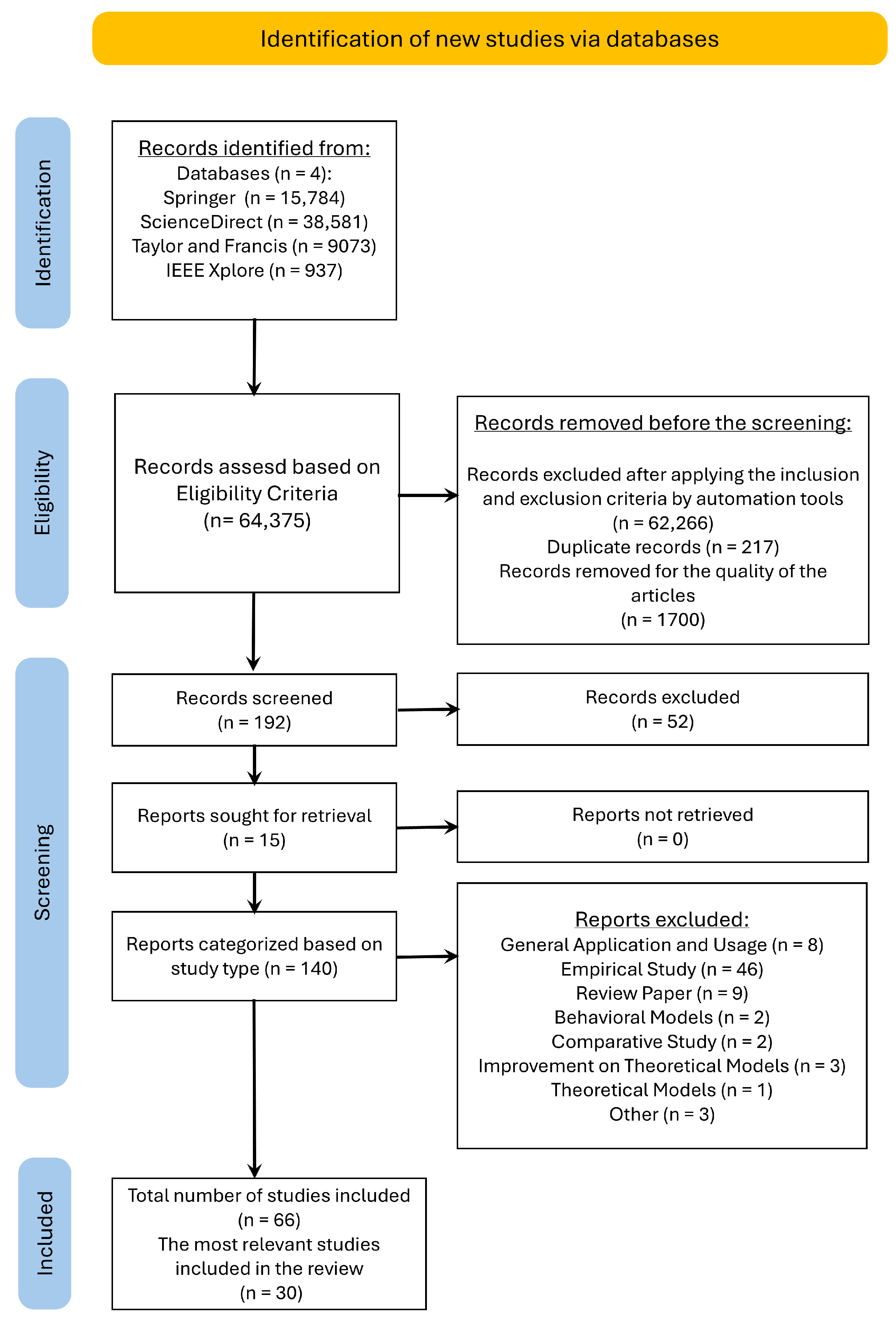





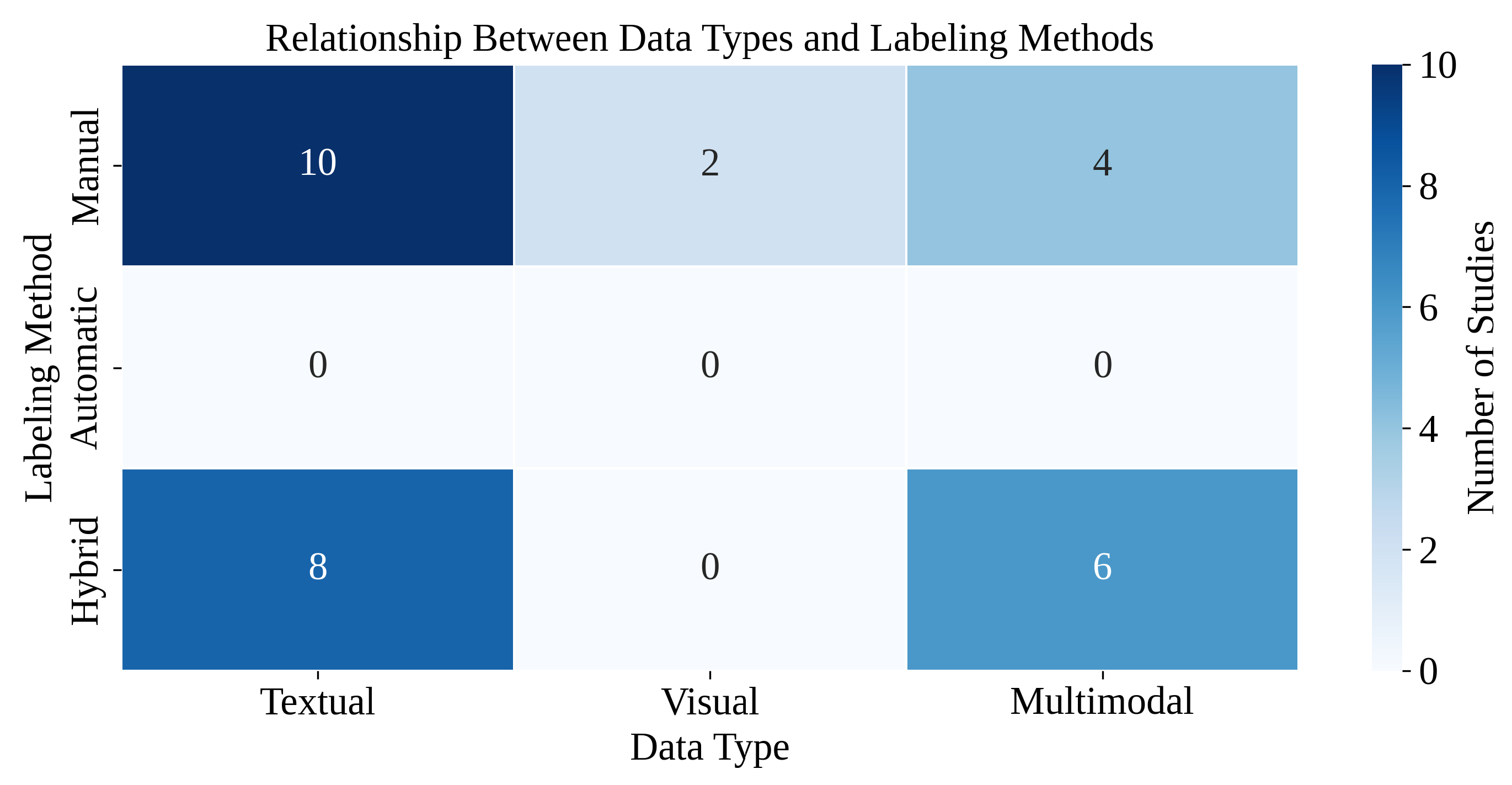
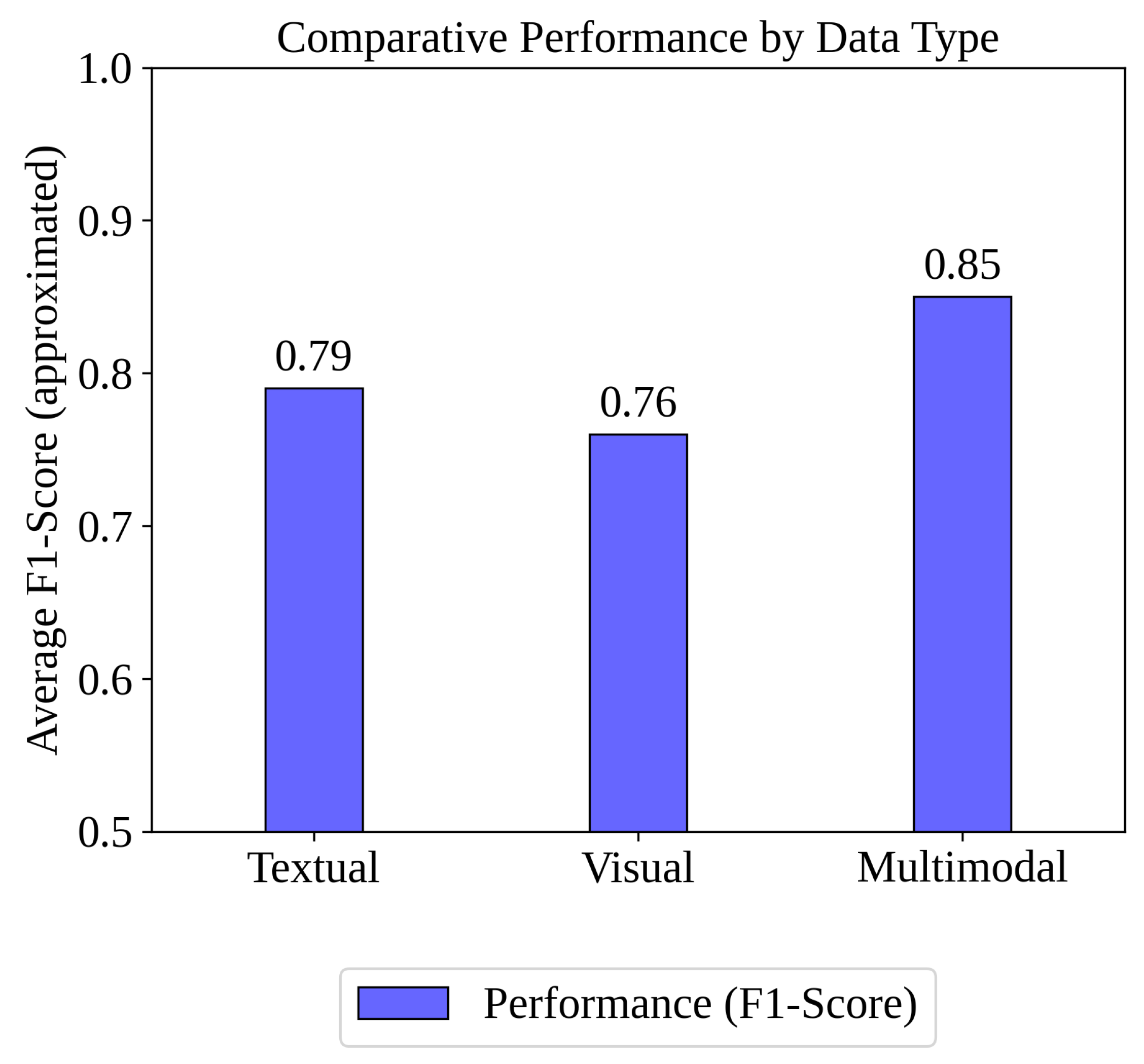


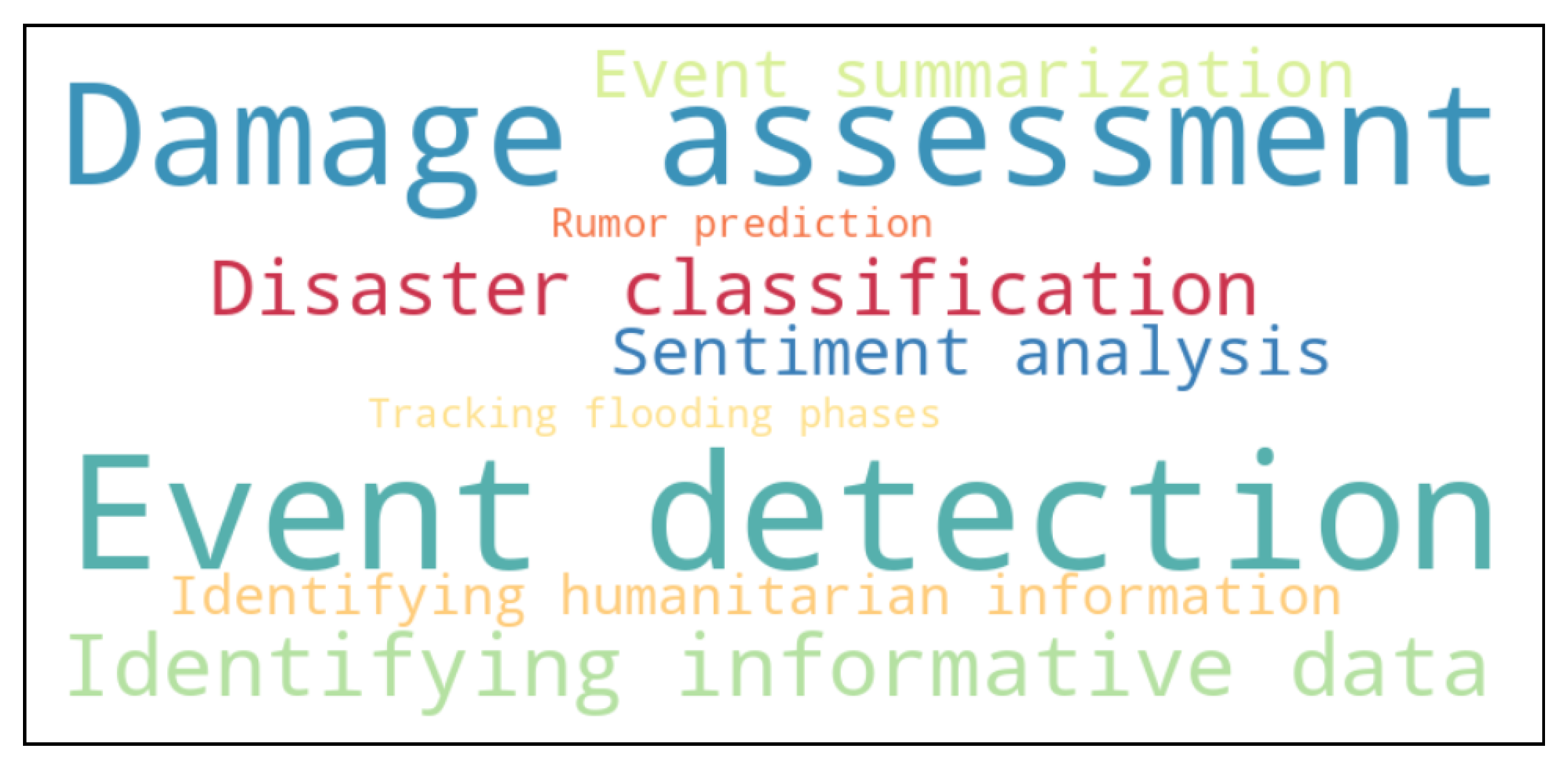
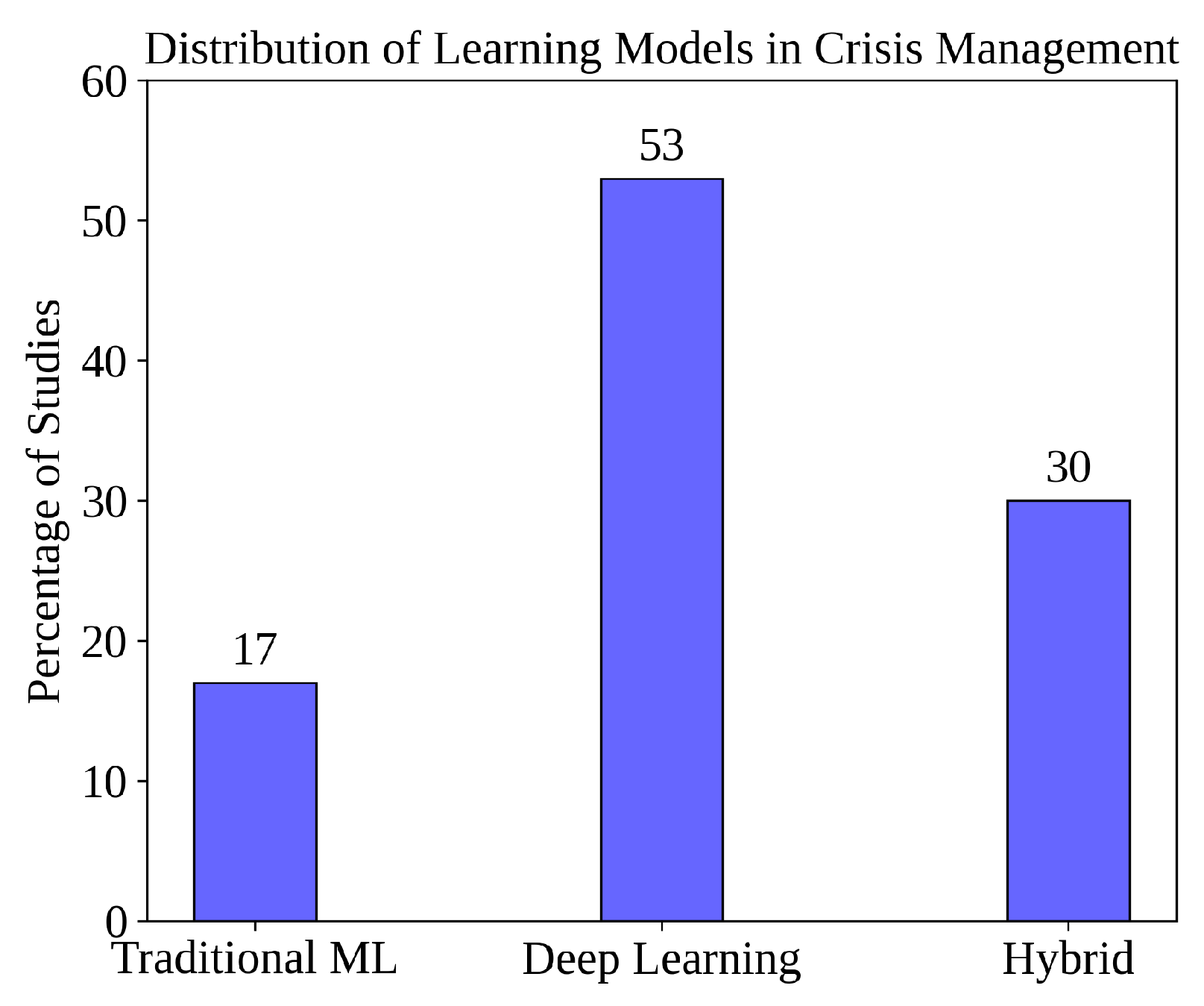
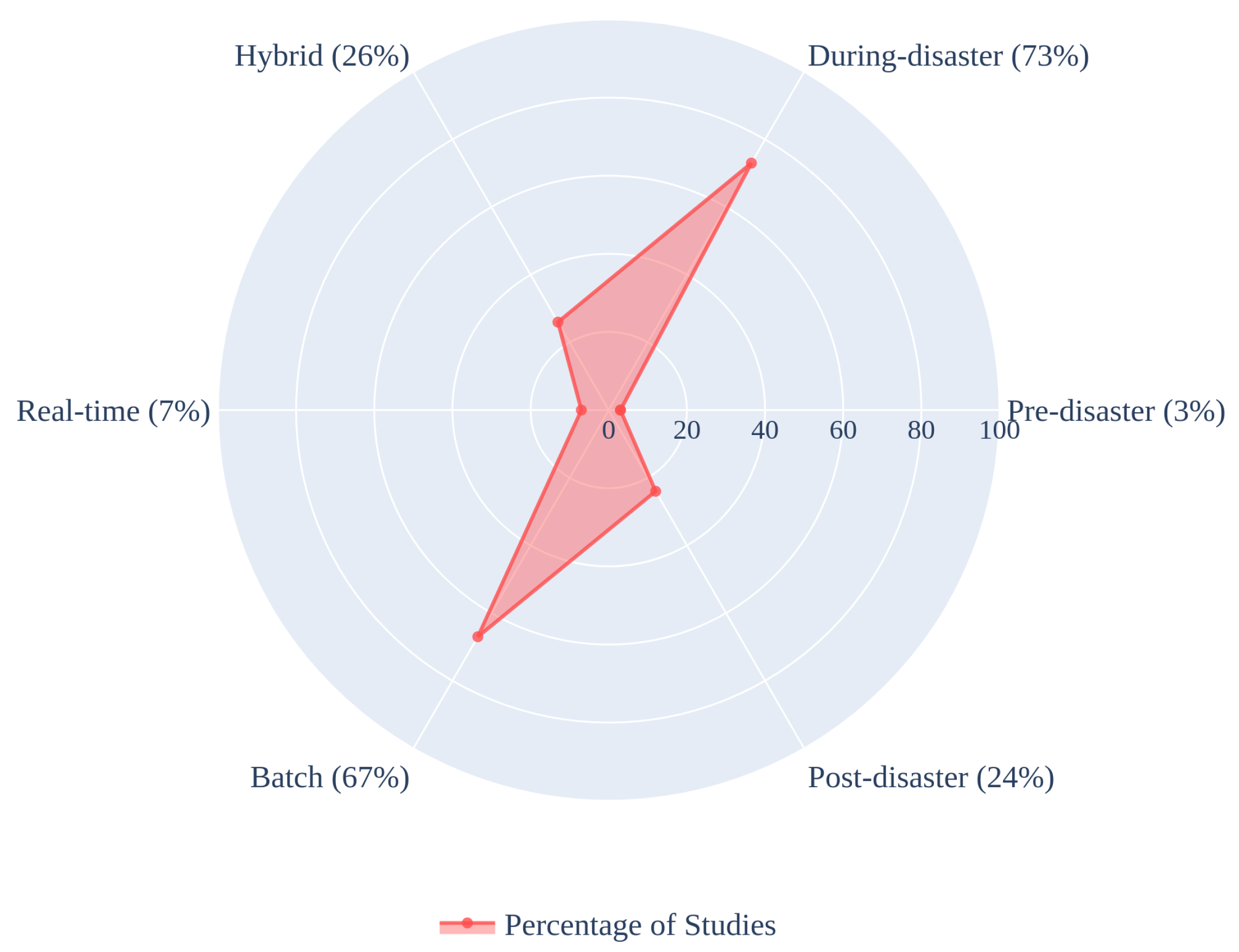
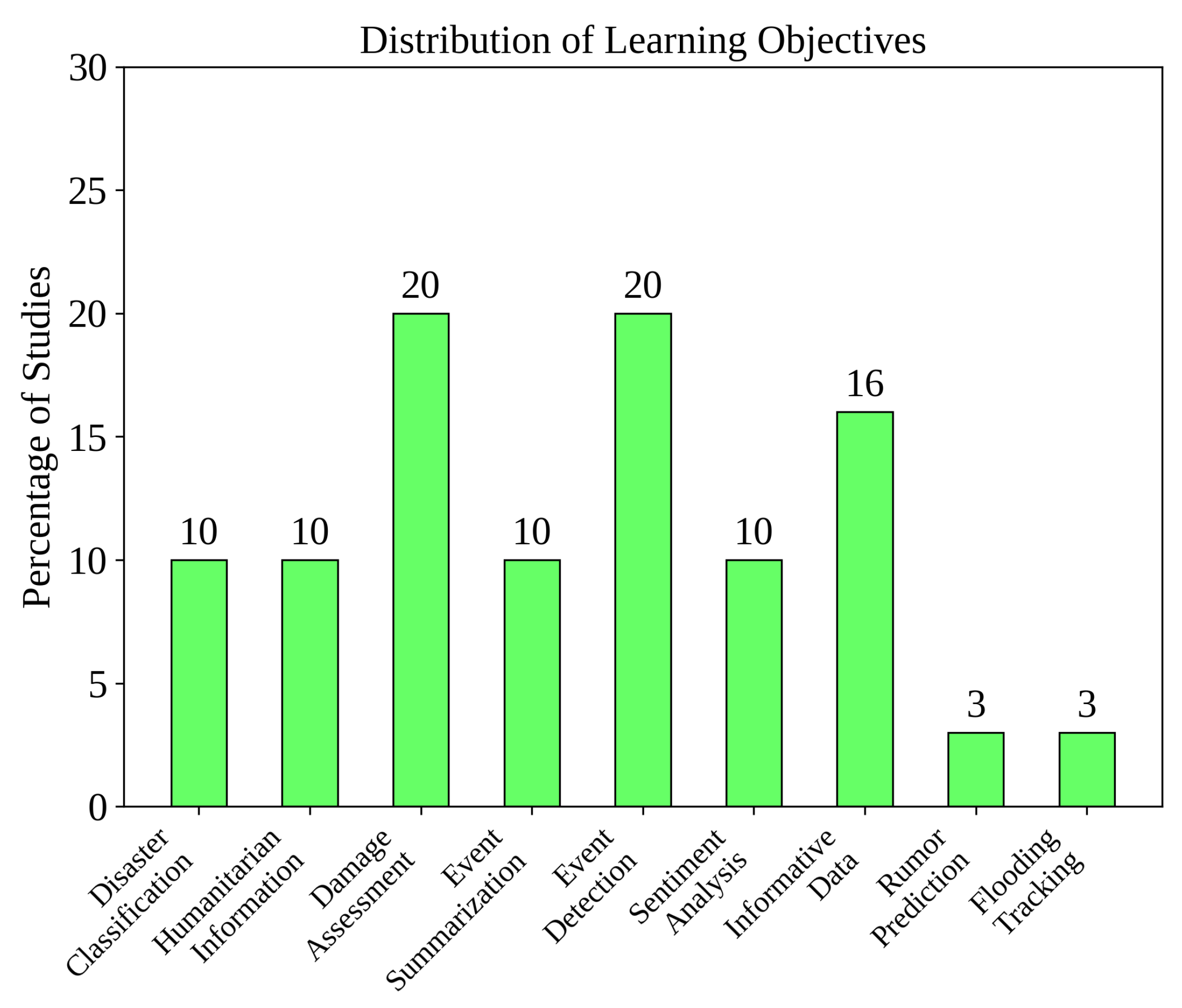
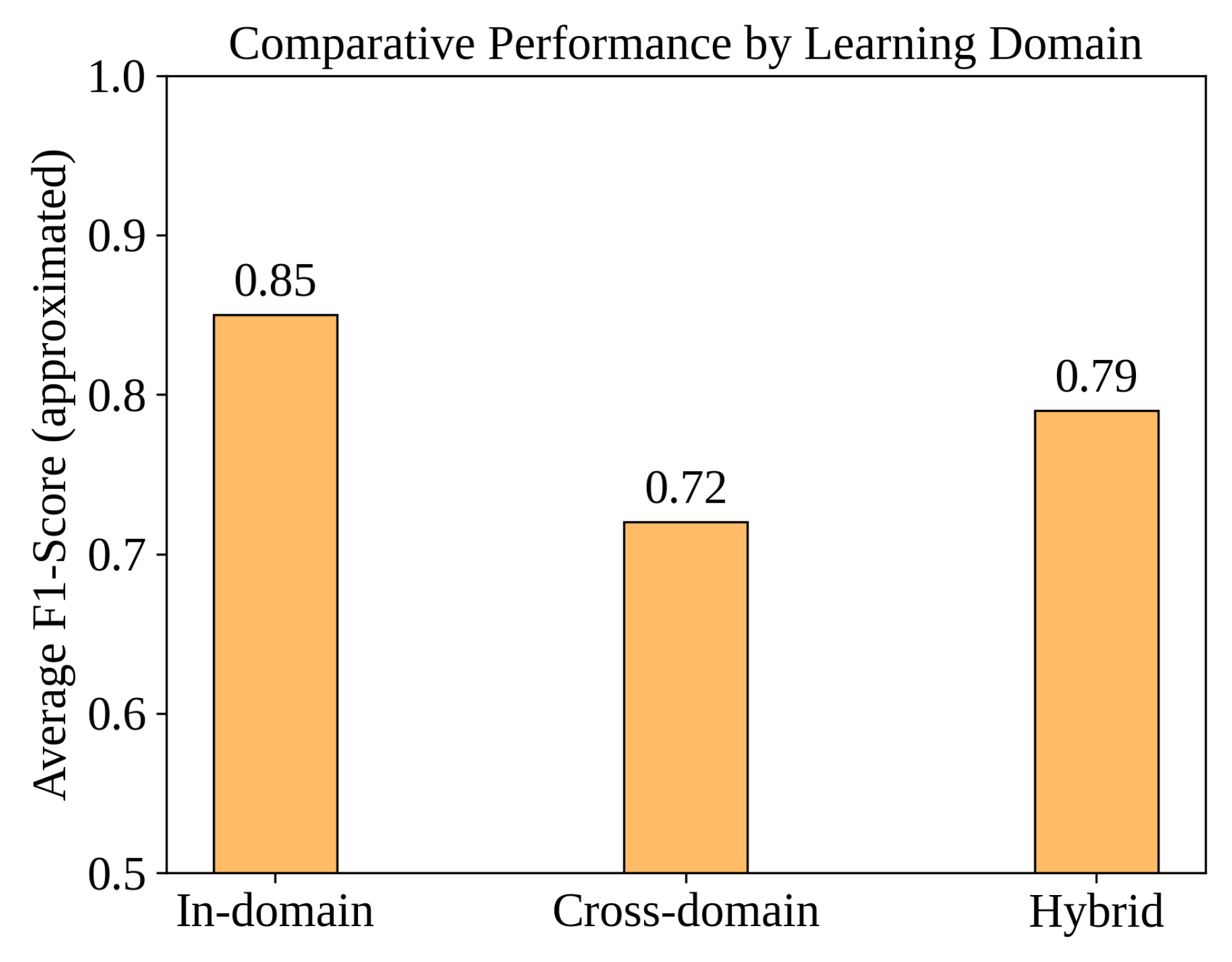
| Ref. | Year | Coverage | Unimodal Data | Multimodal Data | Single Data Source | Multiple Data Sources | Labeling Methods | Learning Models | Learning Domains | Learning Phases | Learning Types | Learning Objectives |
|---|---|---|---|---|---|---|---|---|---|---|---|---|
| [7] | 2018 | 2009–2018 | √ | × | √ | × | × | √ | × | √ | √ | √ |
| [2] | 2020 | 2007–2019 | √ | √ | √ | √ | × | √ | × | √ | × | √ |
| [11] | 2020 | 2014–2020 | √ | × | √ | × | × | √ | × | √ | × | × |
| [9] | 2021 | 2007–2019 | √ | × | √ | × | × | √ | √ | √ | × | √ |
| [1] | 2022 | 2008–2021 | √ | × | √ | √ | × | √ | × | √ | × | √ |
| [10] | 2022 | 2011–2021 | √ | × | √ | √ | × | √ | × | × | × | √ |
| [12] | 2023 | 2018–2022 | √ | × | √ | × | × | × | × | × | × | √ |
| Ours | 2025 | 2020–2024 | √ | √ | √ | √ | √ | √ | √ | √ | √ | √ |
| Main Aspect | Sub-Category | Type | Representative Studies | Key Applications/Findings |
|---|---|---|---|---|
| Data Type (30 studies) | Unimodal (20 studies) | Textual (18 studies) | Tweet classification: [6,16,17,18] Situational awareness: [19,20,21,22,23,24] Information extraction: [25,26,30,31,32] Sentiment analysis: [27,28,29] |
|
| Visual (2 studies) | Damage assessment: [33,34] |
| ||
| Multimodal (10 studies) | Text + image, Text + geolocation, Multiple modalities | Situational awareness: [35,36,37] Event summarization: [43,44] Multimodal classification: [38,39,40,41,42] |
| |
| Data Labeling (30 studies) | Manual (16 studies) | Crowdsourcing, Domain experts | Visual data: [33,34] Social media content: [6,21,22,27,30,35,36] Pre-existing datasets: [16,17,19,25,28,38,39] |
|
| Automatic | ML techniques | Uses supervised and unsupervised machine learning techniques |
| |
| Hybrid (14 studies) | Active learning, Semi-supervised | Real-time processing: [18,23,29,37,42] Optimized labeling: [20,24,26,31,32,40,41,43,44] |
| |
| Data Source (30 studies) | Single-source (25 studies) | Twitter (22), Sina Weibo (2), News sources (1) | Twitter: [6,16,17,18,19,20,22,23,25,26,28,29,30,32,34,35,36,37,39,40,41,44] Sina Weibo: [21,27] News sources: [43] |
|
| Multi-source (5 studies) | Social media, Smart infrastructure, Geographic data, Web sources | Cross-platform: [24,31,33,38,42] |
| |
| Learning Model (30 studies) | Traditional ML (5) | SVM, RF, NB, SMM, SVR | Classification: [6,17] Relevance filtering: [18] Early warning: [29] Event discovery: [38] |
|
| Deep learning (16) | CNN, BERT, LSTM, ResNet, Bi-LSTM, Transformer, GAT | Textual analysis: [16,20,21,23,25,26,27,31] Multimodal: [35,36,37,39,40,43] Real time: [34,42] |
| |
| Hybrid (9) | ML+DL, MOEA, DANN, SVM+CNN, ESVM-ELM | Multimodal fusion: [44] Domain adaptation: [28] Damage assessment: [19,33,41] Enhanced classification: [22,24,30,32] |
| |
| Learning Domain (30 studies) | In-domain (23) | Same disaster event for training/testing | Disaster-specific: [6,16,18,29,32,35,36,37] Event-targeted: [19,20,21,22,23,24,25,27,31,39,40,41,42,43,44] |
|
| Cross-domain (4) | Different events for training/testing | Transfer learning: [30,33] Generalization: [34,38] |
| |
| Hybrid (3) | Mix of in-domain and cross-domain | Domain adaptation: [17,26,28] |
| |
| Learning Phase (30 studies) | Pre-disaster (1) | Early warning systems | Informative data: [29] |
|
| During-disaster (22) | Real-time monitoring, awareness | Real-time classification: [18,23,26,32,34,42] Situational awareness: [20,27,28,35,36,37,38,41] Event-specific: [6,16,17,22,24,30,39,44] |
| |
| Post-disaster (7) | Damage assessment, recovery | Damage evaluation: [19,33,40] Recovery support: [21,25,31,43] |
| |
| Learning Type (30 studies) | Batch (20) | Retrospective data analysis | Classification: [6,16,17,25,27,36,37,40,43] Analysis: [20,21,22,24,30,31,33,35,39,41,44] |
|
| Real time (2) | Data stream analysis | Stream processing: [34,42] |
| |
| Hybrid (8) | Batch + continuous stream processing | Adaptive systems: [18,19,23,26,28,29,32,38] |
| |
| Learning Objective (30 studies) * | Identifying informative data (5) | Relevance classification, info extraction | Filtering: [6,18,23,29,39] |
|
| Sentiment analysis (3) | Opinion mining, emotional analysis | Public opinion: [27,28,37] |
| |
| Event detection (6) | Anomaly detection, pattern recognition | Event discovery: [20,22,30,31,38,42] |
| |
| Event summarization (3) | Static, real-time summarization | Summary generation: [26,43,44] |
| |
| Damage assessment (6) | Infrastructure impact analysis | Damage evaluation: [17,19,24,33,34,41] |
| |
| Humanitarian info (3) | Multi-category classification | Aid-related: [22,25,36] |
| |
| Learning Objective (30 studies) * | Disaster classification (3) | Multi-label, crisis type identification | Disaster typing: [16,32,40] |
|
| Rumor prediction (1) | User behavior analysis | Rumor propagation: [21] |
| |
| Flood tracking (1) | Flood phase monitoring | Flood monitoring: [35] |
|
| Ref. | Learning Objective | Data Type | Learning Phase | Learning Model | Data Labeling | Learning Type | Data Source | Learning Domain |
|---|---|---|---|---|---|---|---|---|
| [16] | Disaster classification | Textual | During-disaster | Supervised contrastive learning | Manual labeling | Batch learning | In-domain | |
| [17] | Damage assessment | Textual | During-disaster | SVR, SLR, and RF | Manual labeling | Batch learning | Hybrid approach | |
| [6] | Identifying informative data | Textual | During-disaster | SMM | Manual labeling | Batch learning | In-domain | |
| [18] | Identifying informative data | Textual | During-disaster | RF | Hybrid approach | Hybrid approach | In-domain | |
| [36] | Identifying humanitarian information | Multimodal | During-disaster | BERT, Deep-CNN | Manual labeling | Batch learning | In-domain | |
| [37] | Sentiment analysis | Multimodal | During-disaster | Transformer, LSTM, CLIP, ResNet-50 | Hybrid approach | Batch learning | In-domain | |
| [33] | Damage assessment | Visual | Post-disaster | ANN, SVM, AlexNet, InceptionV3, ResNet-50 | Manual labeling | Batch learning | Twitter, Facebook, Smart infrastructures | Cross-domain |
| [32] | Disaster classification | Textual | During-disaster | ESVM-ELM, TF-IDF | Hybrid approach | Hybrid approach | In-domain | |
| [30] | Event detection | Textual | During-disaster | Neural network, geocoding, NLP, DBSCAN | Manual labeling | Batch learning | Cross-domain | |
| [35] | Flooding phases tracking | Multimodal | During-disaster | NER, NeuroNER, ResNet, CNN | Manual labeling | Batch learning | In-domain | |
| [29] | Identifying informative data | Textual | Pre-disaster | NB, n-Grams, Log-likelihood similarity | Hybrid approach | Hybrid approach | In-domain | |
| [22] | Event detection and identifying humanitarian information | Textual | During-disaster | NER, BERT, graph-based clustering | Manual labeling | Batch learning | In-domain | |
| [31] | Event detection | Textual | Post-disaster | Text-CNN model | Hybrid approach | Batch learning | Twitter and Sina | In-domain |
| [23] | Identifying informative data | Textual | During-disaster | CNN | Hybrid approach | Hybrid approach | In-domain | |
| [40] | Disaster classification | Multimodal | Post-disaster | ResNet-50 and Bi-LSTM | Hybrid approach | Batch learning | In-domain | |
| [42] | Event detection | Multimodal | During-disaster | VGG-16, LSTM | Hybrid approach | Real-time learning | Twitter and Web sources | In-domain |
| [43] | Event summarization | Multimodal | Post-disaster | Bi-LSTM, LSTM, Transformer | Hybrid approach | Batch learning | Daily Mail’s service | In-domain |
| [44] | Event summarization | Multimodal | During-disaster | MOEA and dense captioning | Hybrid approach | Batch learning | In-domain | |
| [24] | Damage assessment | Textual | During-disaster | Word2Vec, CBOW, graph-based, LDA | Hybrid approach | Batch learning | Twitter, Sina Weibo, Damage, and Typhoon data | In-domain |
| [27] | Sentiment analysis | Textual | During-disaster | BERT | Manual labeling | Batch learning | Sina Weibo | In-domain |
| [19] | Damage assessment | Textual | Post-disaster | SVM, RCNNs | Manual labeling | Hybrid approach | In-domain | |
| [34] | Damage assessment | Visual | During-disaster | CD-NAS | Manual labeling | Real-time learning | Cross-domain | |
| [28] | Sentiment analysis | Textual | During-disaster | RF, DANN | Manual labeling | Hybrid approach | Hybrid approach | |
| [38] | Event detection | Multimodal | During-disaster | Laplacian Regularization | Manual labeling | Hybrid approach | Flickr and News media | Cross-domain |
| [20] | Event detection | Textual | During-disaster | JoSE | Hybrid approach | Batch learning | In-domain | |
| [21] | Rumor prediction | Textual | Post-disaster | R-CNN | Manual labeling | Batch learning | Sina Weibo | In-domain |
| [25] | Identifying humanitarian information | Textual | Post-disaster | BERT, GAT, Relation Network | Manual labeling | Batch learning | In-domain | |
| [39] | Identifying informative data | Multimodal | During-disaster | Bi-LSTM, VGG-16 | Manual labeling | Batch learning | In-domain | |
| [41] | Damage assessment | Multimodal | During-disaster | BMLP, SDAE, HHNN | Hybrid approach | Batch learning | In-domain | |
| [26] | Event summarization | Textual | During-disaster | CNN | Hybrid approach | Hybrid approach | Hybrid approach |
| Ref. | Data Type | Learning Domain | Learning Model | Data Labeling | Learning Type | Data Source | ||||||
|---|---|---|---|---|---|---|---|---|---|---|---|---|
| Unimodal | Multimodal | In-Domain | Cross- Domain | Traditional ML | DL | Manual | Automatic | Real Time | Batch | Single- Source | Multi- Source | |
| [16] | √ | × | √ | × | × | √ | √ | × | × | √ | √ | × |
| [17] | √ | × | √ | √ | √ | × | √ | × | × | √ | √ | × |
| [6] | √ | × | √ | × | √ | × | √ | × | × | √ | √ | × |
| [18] | √ | × | √ | × | √ | × | √ | √ | √ | √ | √ | × |
| [36] | × | √ | √ | × | × | √ | √ | × | × | √ | √ | × |
| [37] | × | √ | √ | × | × | √ | √ | √ | × | √ | √ | × |
| [33] | √ | × | × | √ | √ | √ | √ | × | × | √ | × | √ |
| [32] | √ | × | √ | × | √ | √ | √ | √ | √ | √ | √ | × |
| [30] | √ | × | × | √ | √ | √ | √ | × | × | √ | √ | × |
| [35] | × | √ | √ | × | × | √ | √ | × | × | √ | √ | × |
| [29] | √ | × | √ | × | √ | × | √ | √ | √ | √ | √ | × |
| [22] | √ | × | √ | × | √ | √ | √ | × | × | √ | √ | × |
| [31] | √ | × | √ | × | × | √ | √ | √ | × | √ | × | √ |
| [23] | √ | × | √ | × | × | √ | √ | √ | √ | √ | √ | × |
| [40] | × | √ | √ | × | × | √ | √ | √ | × | √ | √ | × |
| [42] | × | √ | √ | × | × | √ | √ | √ | √ | × | × | √ |
| [43] | × | √ | √ | × | × | √ | √ | √ | × | √ | √ | × |
| [44] | × | √ | √ | × | √ | √ | √ | √ | × | √ | √ | × |
| [24] | √ | × | √ | × | √ | √ | √ | √ | × | √ | × | √ |
| [27] | √ | × | √ | × | × | √ | √ | × | × | √ | √ | × |
| [19] | √ | × | √ | × | √ | √ | √ | × | √ | √ | √ | × |
| [34] | √ | × | × | √ | × | √ | √ | × | √ | × | √ | × |
| [28] | √ | × | √ | √ | √ | √ | √ | × | √ | √ | √ | × |
| [38] | × | √ | × | √ | √ | × | √ | × | √ | √ | × | √ |
| [20] | √ | × | √ | × | × | √ | √ | √ | × | √ | √ | × |
| [21] | √ | × | √ | × | × | √ | √ | × | × | √ | √ | × |
| [25] | √ | × | √ | × | × | √ | √ | × | × | √ | √ | × |
| [39] | × | √ | √ | × | × | √ | √ | × | × | √ | √ | × |
| [41] | × | √ | √ | × | √ | √ | √ | √ | × | √ | √ | × |
| [26] | √ | × | √ | √ | × | √ | √ | √ | √ | √ | √ | × |
| Total | 20 | 10 | 26 | 7 | 14 | 25 | 30 | 14 | 10 | 28 | 25 | 5 |
| Percentage | 67% | 33% | 87% | 23% | 47% | 83% | 100% | 47% | 33% | 93% | 83% | 17% |
Disclaimer/Publisher’s Note: The statements, opinions and data contained in all publications are solely those of the individual author(s) and contributor(s) and not of MDPI and/or the editor(s). MDPI and/or the editor(s) disclaim responsibility for any injury to people or property resulting from any ideas, methods, instructions or products referred to in the content. |
© 2025 by the authors. Licensee MDPI, Basel, Switzerland. This article is an open access article distributed under the terms and conditions of the Creative Commons Attribution (CC BY) license (https://creativecommons.org/licenses/by/4.0/).
Share and Cite
Aljedani, N.; Alotaibi, R.; Cherif, A. AI–Social Media Integration for Crisis Management: A Systematic Review of Data and Learning Aspects. Appl. Sci. 2025, 15, 12283. https://doi.org/10.3390/app152212283
Aljedani N, Alotaibi R, Cherif A. AI–Social Media Integration for Crisis Management: A Systematic Review of Data and Learning Aspects. Applied Sciences. 2025; 15(22):12283. https://doi.org/10.3390/app152212283
Chicago/Turabian StyleAljedani, Nawal, Reem Alotaibi, and Asma Cherif. 2025. "AI–Social Media Integration for Crisis Management: A Systematic Review of Data and Learning Aspects" Applied Sciences 15, no. 22: 12283. https://doi.org/10.3390/app152212283
APA StyleAljedani, N., Alotaibi, R., & Cherif, A. (2025). AI–Social Media Integration for Crisis Management: A Systematic Review of Data and Learning Aspects. Applied Sciences, 15(22), 12283. https://doi.org/10.3390/app152212283






